|
1983 - Facility changes
At the beginning of the year it became evident that the long time owner and operator of the Denham Flying Training School, Tom Howard, was looking to retire. He had already transferred three of the school's aircraft to Kestrel Aviation, a company run by his daughter and son-in-law, but was now looking to sell the rest of the flying school and its assets. Hana Aviation, also known as Cabair, was already operating the Gulfstream School of Flying at Denham, were interested in acquiring the school as it would make them the sole flying training organisation at Denham. A successful deal was struck during the summer and the Denham Flying Training School ceased operations at the end of September. The intention was for the Gulfstream School of Flying to move from the north side offices to the larger building on the south side, however a number of changes were to be made to this building before they could move in.
|
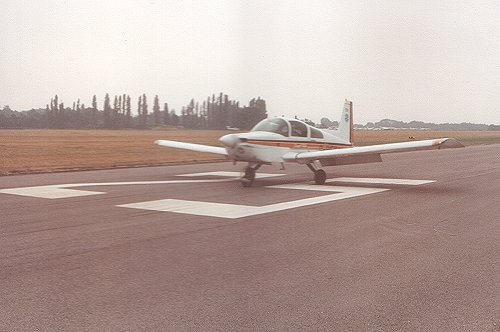
The Gulfstream School of Flying fleet was mostly Grumman aircraft, such as this AA-5 Cheetah, G-FOUX, seen at Denham in 1983.
|
|
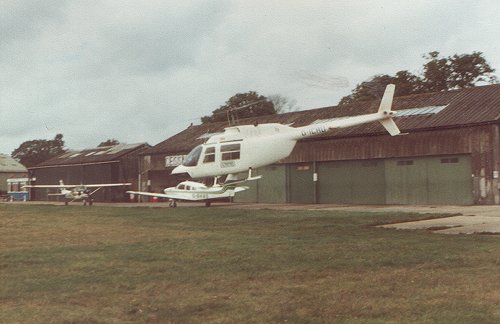
As well as the Gulfstream School of Flying, Hana Aviation also owned Heliwork based at Thruxton and several of their aircraft were regular visitors to Denham, such as this Bell 206 Jet Ranger, G-ICRU.
|
In October there was another change to the aerodrome facilities. This was an upgrade to the runway lighting to improve safety. Four bars of three runway threshold lights were added, two bars on each side of each end of the runway. These were to give pilots a clear indication of the start of each runway when making approaches at night or in bad weather.
| 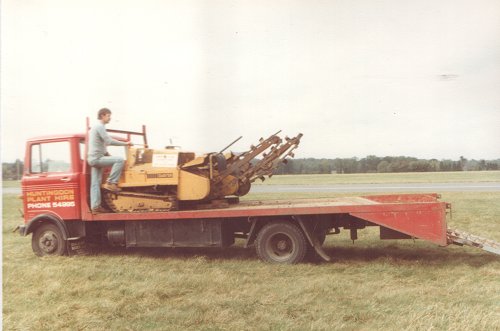
This strange machine was delivered to Denham in October to dig the furrow for the cables of the new runway lighting.
|
|
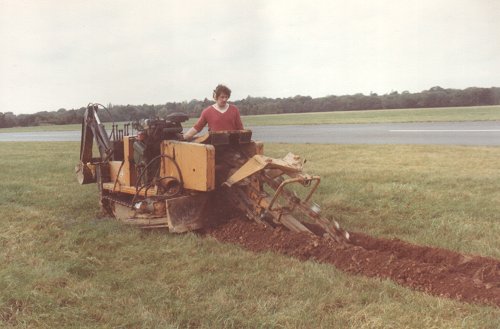
The unusual digger cut a deep furrow in the grass to take the power and control cables for the new threshold lights.
|
|
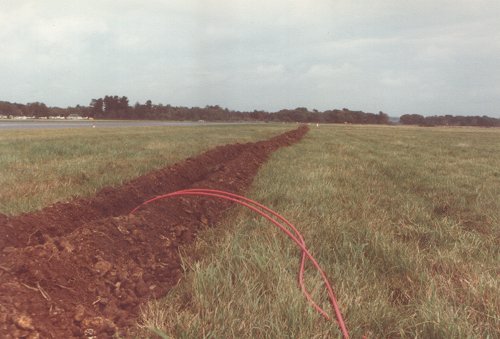
The furrow for the control and power cables ran the entire length of the runway, then across to the control room in the south side office building.
|
|
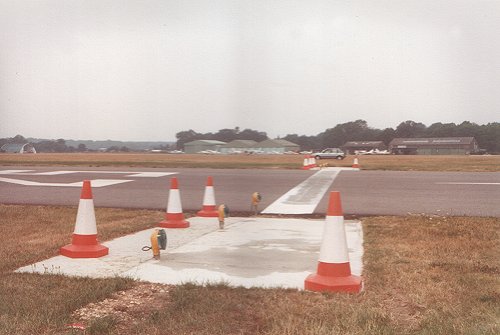
The new threshold lights consisted of three lights positioned on either side of the runway, marking the start clearly at night and in bad weather.
|
One other major change was made to the aerodrome in 1983. The weight of several of the larger aircraft now operating from Denham meant that during the winter, when the grass surfaces were often very wet and muddy, then taxying too and from the runway could be difficult. To alieviate this, a taxiway was installed between the hardstanding in front of the hangars and a point about two thirds of the way along the runway. This was not a concrete taxiway, but a special metal mat that was laid over the grass, strengthening it and binding the soil beneath, yet allowing the grass to continue to grow and be mown. This meant it would remain firm no matter how much rain fell on the aerodrome and would form a stable and safe surface for heavy aircraft to taxy on.
|
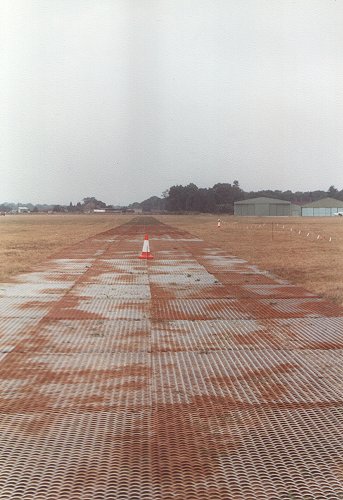
The view along the new taxiway from the runway toward the hangars. The mat forming the surface can be clearly seen.
|
| 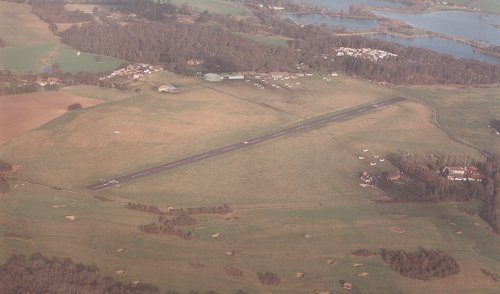
A view of Denham Aerodrome in 1983 from the South West.
|
|

A view of Denham Aerodrome in 1983 from the West.
|
There are many visitors to Denham in the course of a year, some of them are remarkable aircraft. One such in June 1983 was G-BECM, a Pitts S-2B Special two-seat aerobatic aircraft. This particular aircraft had been built in 1976 and had been through two owners before being purchased by the tobacco company Rothmans Ltd in 1978. For the next three years the Pitts was part of the famous Rothmans Aerobatic Team, flying displays all over Europe at air shows and many other events. In 1981 it was sold to Airmiles Ltd, who continued to use it to fly displays in a variety of sponsor logos. In June it visited Denham, still retaining some of its Rothmans display scheme.
|
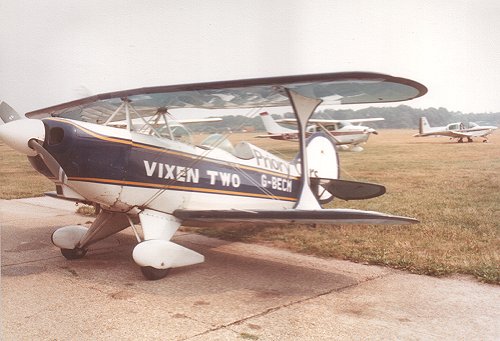
Pitts S-2B Special G-BECM visited Denham in June, still showing part of its former Rothmans Aerobatic Team display scheme.
|
An interesting local problem began in 1983 when a local scrapyard began burning wiring to strip plastic or other coatings off the valuable metal cores. The smoke generated by these fires was thick and choking, and in the wrong conditions would sometimes lie across the aerodrome creating conditions of poor visibility.
|
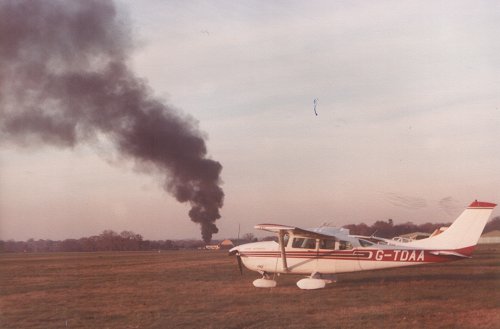
The local scrap fires often caused a blanket of smoke at Denham.
|
As can be seen, a great deal happened at Denham in 1983, and this was indeed to be a feature of the decade as a whole. More changes were to happen in 1984, as will be related next.
|
|

